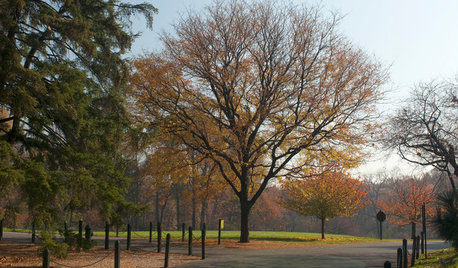I believe this stuff is one of those natural "superfoods" miracle except for plants.
i had a huge gnat outdoor problem in my containers (tomatoes and peppers).. totally infested with gnats and their larvae.
i searched for something natural that would be pretty safe and tried
using Tea, (Chamomile), Ground Cinnamon (what a joke) and peroxide..
nothing seem to work.
for the past few days i've been doing some
research to find a solution to get rid of them. i believe the
gnats/larvae feed not only on fungus in moist soils, but actual micro
roots too.. damaging the plant over a period of time.
took a ride to HD and picked up bottle of Neem Oil extract (the concentrated stuff)..
added
1 tbsp to a half gallon of water and started spraying the soil.. by the
time i made it around to all the containers and back (about 10 mins)
the gnats completely disappeared! HOLY HELL..
it gets better..
not only Neem Oil can be used to get rid of insects, but i've discovered it works as a fungicide as well. AND if that wasn't enough, it's organic.
there have been some research that it can actually be beneficial to adding it to the soil when watering..
i hope others would give this stuff a try if they are having problems in the garden (i see many topics about plant diseases and health due to pests). it kills just about every "bad" bug, but the good bugs (bees, ladybugs, bufferflies, etc) are safe.
i'd like to hear others feedback on this oil extract if they've had good experience like i have with it.just wanted to share my experience and for other people to discover this if they haven't already and see if this helps them in the garden for problems they might be experiencing and yet to find a solution.
also, the below quote i found a pdf from a University while i was doing research on Neem Oil.
cheers,
-------------------------
The fact that the extracts can be taken up by plants (and thereby confer
protection from within) is one of neem's most interesting and potentially useful
features. As has been noted, however, the level of this systemic activity differs
from plant to plant and formulation to formulation. Extracts without oil, with a little
oil, and with much oil exhibit different levels of systemic action.
The systemic activity differs with the insect as well. It is not effective on
some aphids, for instance. They feed in phloem tissues, where (for reasons yet
unknown) the concentration of azadirachtin is very low. Phloem is the plant's
outermost layer of conductive tissues and insects such as these, whose mouthparts
cannot penetrate past it, are little affected by neem treatments. On the other hand,
leafhoppers and planthoppers, that feed at least half the time on the deeper layer of
conductive tissues (called the xylem), get knocked down.
Repellant effect – Neem has demonstrated its repellancy in trials against
many insects, including buffalo fly and ticks in cattle, ticks and lice in sheep,
mosquitos and sand-flies, human head lice, fleas and ticks on dogs, cats and all
domestic pets, insects parasitic against fruit, vegetable and broad acre crops such
as cotton and sugar and for the first time ever against the North Q’land Fruit
Sucking Moth. (DPI has tested it against this moth at Mareeba in North Q’land, & described it as a “cumulative repellant”)
Insecticidal effect – Neem kills insects by many different methods, the best
known of which is it’s anti-feedant action. Once dosed, insects can’t feed and thus
starve to death. However, Neem has many other activities against insects
disrupting or inhibiting development of eggs, larvae or pupae, preventing the
molting of larvae or nymphs, disrupting mating and sexual communication, repelling
larvae and adults, deterring females from laying eggs, sterilizing adults, poisoning
larvae and adults, feeding deterrent, blocking the ability to swallow by reducing the
motility of the gut preventing metamorphosis, thus preventing for example
mosquito wrigglers maturing into adults, inhibiting the formation of chitin, the
substance essential for the insect to form an exoskeleton (Ref. Australia DPI)
All leaf-eating insects are wiped out as are all insects actually coming into
contact with Neem. This huge array of insecticidal properties of Neem is thought to
be due to it’s adversely effecting the insects hormone system. If that is so then no
insect will be able to become immune, because it’s hormone system is essential for
every bodily function. Most significant, insects develop resistance in each
subsequent generation, and as insects dosed with Neem cannot breed, thus there
are no subsequent generations in which resistance can develop. (Ref. Australia DPI)
Is Neem Safe ? – Neem is safe for humans, animals, birds and fish, yet
deadly to most insects. (Ref. Australia DPI)
Exceptions are spiders, butterflies, bees, ladybirds etc, ie non-leaf eating
insects. Indians have been using Neem for hundreds of years – Mahatma Ghandi is
said to have regularly prepared and eaten Neem chutney – as oral hygiene and
dental care, fungicide, bactericide, small doses taken internally to treat malaria, to
control blood sugar in diabetes, consumed as Neem leaf tea; and the leaves and
seeds are eaten by sheep and cattle without any ill effects. (Ref. Australia DPI)
----------------------













herotozero
digdirt2
Related Discussions
Aphids and possibly mites, gnats - Neem not working
Q
Can I add neem concentrate?
Q
~July~Cracked Pot Gardner's
Q
How to nurture this property back to health organically?
Q
sjetski